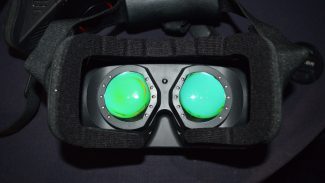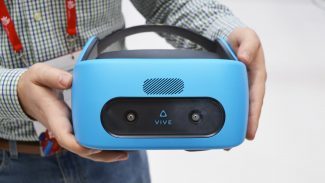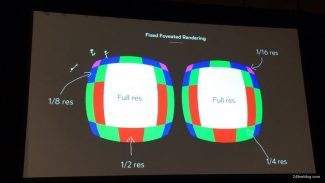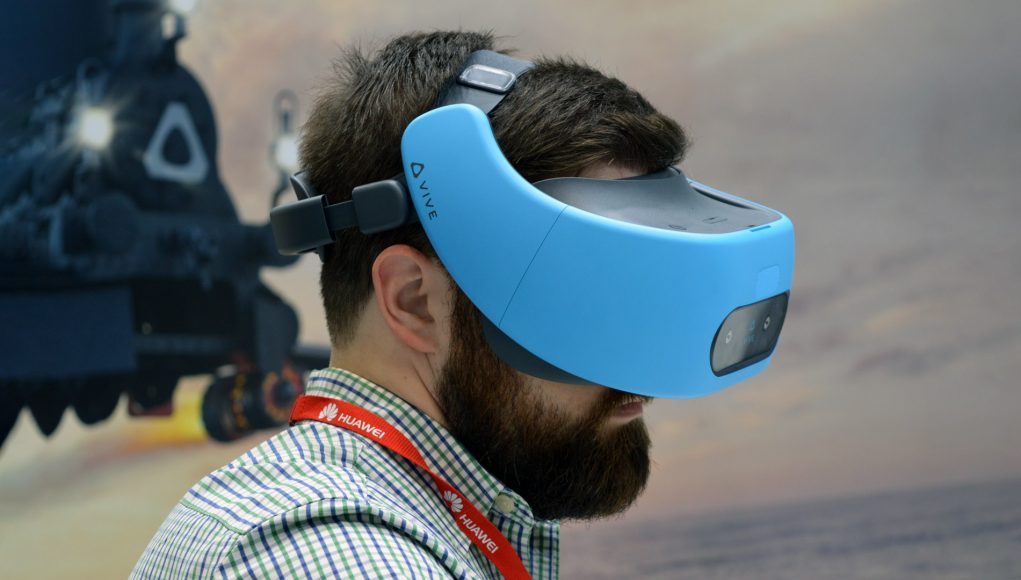Here’s a roundup of news from the third day of our GDC 2018 coverage. Qualcomm’s latest reference headset supports Vive Wave, HTC Vive Focus international launch, Oculus talks about their 2018 ecosystem, announces ‘Positional Timewarp’, reveals new Oculus Go details, and Unreal Engine’s real-time ray-tracing demo.
Qualcomm’s reference VR headset supports Vive Wave

Qualcomm announced their latest 845 Virtual Reality Development Kit (VRDK) reference headset will have support for HTC’s Vive Wave open API. This means the upcoming third-party headsets based on Qualcomm’s reference design will have turn-key access to the Viveport app store.
First unveiled at MWC 2018, the latest Qualcomm VRDK uses a Snapdragon 845 SoC, and is said to offer twice as much display throughput compared to its 835 predecessor, which was the basis for standalone headsets such as the Vive Focus and Mirage Solo. The new version also adds eye tracking hardware developed by Tobii, and Qualcomm’s own ‘Adreno Foveation’ foveated rendering solution.
Vive Focus international launch this year

HTC have confirmed the Vive Focus will launch internationally “later this year.” The standalone, mobile VR device is based on the Qualcomm 835 VRDK reference design, with inside-out 6DoF positional tracking and a 3DoF controller. Previously, it was unclear whether the Vive Focus would expand its reach beyond China, where it is already on sale. This new announcement means it could give the Lenovo Mirage Solo some competition in Western markets.
‘Inside Oculus 2018’ session: ‘Positional Timewarp’ announced

We live-blogged the GDC Oculus session where Ross O’Dwyer (Director of Engineering), Jason Rubin (VP Content), Chris Pruett (Head of Development Engineering), and Ruth Bram (Producer, Oculus Studios) gave an insight into what’s coming to the Oculus ecosystem in 2018. The team discussed hardware across PC, standalone, and mobile, as well as the core software of Dash and Oculus Home. O’Dwyer stressed the importance of apps submitting depth buffers, as it not only allows better integration with Dash, but is essential to enable ‘Positional Timewarp’, a new component announced for Rift Core 2.0 that promises smoother movement at lower framerate.
Oculus Go fixed foveated rendering and 72Hz refresh rate

During the same session, Chris Pruett (Head of Development Engineering) revealed new details about Oculus Go, which can support an optional 72Hz refresh rate for a smoother experience above the standard 60Hz. This is said to make the image appear brighter and also improve the colours. A built-in, titled renderer developed with Qualcomm enables fixed foveated rendering (which reduces image quality at the edges) for improved performance.
Unreal Engine’s real-time ray-tracing live demo
 During Epic Games’ ‘State of Unreal’ GDC presentation, real-time ray-tracing powered by Nvidia RTX technology in collaboration ILMxLAB was shown live on stage. Nvidia announced RTX earlier this week, a real-time ray-tracing solution for their Volta GPU architecture. The demo used high-quality Star Wars assets, with the rendering performed on an Nvidia DGX Station streamed to an iPad, which was used to control the camera position and lighting settings.
During Epic Games’ ‘State of Unreal’ GDC presentation, real-time ray-tracing powered by Nvidia RTX technology in collaboration ILMxLAB was shown live on stage. Nvidia announced RTX earlier this week, a real-time ray-tracing solution for their Volta GPU architecture. The demo used high-quality Star Wars assets, with the rendering performed on an Nvidia DGX Station streamed to an iPad, which was used to control the camera position and lighting settings.







